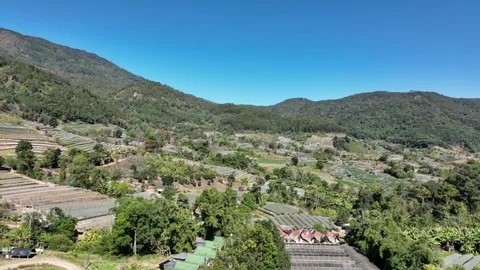A Biosphere Reserve is an internationally recognised area that promotes and tests the sustainable development of these sites. These testing helps in understanding & managing the changes and interaction between the social and ecological systems.
Biosphere was introduced by UNESCO to minimise the conflict between development and conservation. These Biosphere is nominated by the national government, which should meet the minimal criteria under the Man and the Biosphere (MAB) programme of UNESCO.
India’s first biosphere reserve, which was recognised by UNESCO, was the Nilgiri Hills of the Western Ghats, and this biosphere reserve is spread across three states of India, which are Tamil Nadu, Karnataka and Kerala.
In this article, we will explore a list of Biosphere Reserves in India that are recognised by UNESCO.
How many Biosphere Reserves in India are recognised by UNESCO?
Recently, UNESCO officially announced the Cold Desert Biosphere Reserve in India as part of 26 new sites added to UNESCO’s World Network of Biosphere Reserves (WNBR) during the 5th World Congress of Biosphere Reserves in Hangzhou, China.
So, after this announcement, there are now a total of 13 Biosphere Reserves in India that are recognised by UNESCO.
Also Read: List of Ramsar Sites in India 2025: Check their State-wise location & Facts
List of Biosphere Reserves in India that are recognised by UNESCO
| ~ | Biosphere Reserve | Year for Recognition in UNESCO | Location |
| 1. | Nilgiri | 2000 | Western Ghat (Tamil Nadu, Karnataka and Kerala) |
| 2. | Sunderban | 2001 | The delta of the Ganges, Brahmaputra and Meghna rivers on the Bay of Bengal. |
| 3. | Gulf of Mannar | 2001 | Southeastern coastline of India |
| 4. | Nanda Devi | 2004 | Himalayan Mountains in the northern part of India (Uttarakhand) |
| 5. | Similipal | 2009 | Mayurbhanj district, Odisha |
| 6. | Pachmarhi | 2009 | Deccan Peninsula and the Biotic Province of Central India (Satpura Range of Madhya Pradesh) |
| 7. | Nokrek | 2009 | Northeast of India, on the Tura Range (Garo Hills district of Meghalaya) |
| 8. | Achanakmar-Amarkantak | 2012 | Chhattisgarh and Madhya Pradesh |
| 9. | Great Nicobar | 2013 | The southernmost island of the Nicobar Islands |
| 10. | Agasthyamala | 2016 | Southern part of the Western Ghats (Tamil Nadu and Kerala) |
| 11. | Khangchendzonga | 2018 | Sikkim, bordering Nepal to the west and Tibet (China) to the north-west |
| 12. | Panna | 2020 | Bio-geographic zones of the Deccan Peninsula and the Biotic Province of the Central Highlands |
| 13. | Cold Desert | 2025 | Himachal Pradesh's Spiti Valley |
Data Source: Biosphere reserves recognised by UNESCO
Which was the first Biosphere Reserve in India that was recognised by UNESCO?
Nilgiri Biosphere Reserve was the first Biosphere Reserve in India that was recognised by UNESCO in 2000. It is a tropical forest biome, and it comes under the Western Ghats and this location is known as the ‘Hot Spots’ for speciation in the tropics.

Source: Shutterstock
This Biosphere Reserve represents the unique ecosystem ranging from the rain forest in the low hills, tropical montane forest and the grassland in the higher elevations.
Which is the first high-altitude biosphere reserve in India?
Cold Desert Biosphere Reserve is recognised as the first high-altitude biosphere reserve in India. This biosphere is 7,770 km² at altitudes ranging from 3,300 to 6,600 meters, and it encompasses windswept plateaus, glacial valleys, alpine lakes, and rugged high-altitude deserts. This is one of the coldest and driest ecosystems in the UNESCO World Network of Biosphere Reserves (WNBR).
India celebrates yet another milestone in conservation!
— Ministry of Tourism (@tourismgoi) September 29, 2025
The Cold Desert has been designated as India’s 13th UNESCO Biosphere Reserve at the 5th World Congress of Biosphere Reserves. This recognition highlights India’s rich biodiversity and our commitment to preserving fragile… pic.twitter.com/gx3XvWiDQE
According to Tim Curtis, Director & Representative, UNESCO Regional Office for South Asia
“The Cold Desert Biosphere Reserve is a powerful example of how fragile ecosystems can be protected while supporting the communities that depend on them. This designation reflects India’s commitment to balancing conservation with sustainable development, especially in ecologically sensitive and culturally rich regions. UNESCO’s World Network of Biosphere Reserves, under the Man and the Biosphere Programme, is a cornerstone of our efforts to protect biodiversity and promote sustainable development. These sites are not just protected areas, they are places where we actively learn to reconcile with nature, fostering harmony between people and planet through science, culture, and community-led stewardship.”
On behalf of UNESCO, Tim Curtis, Director and UNESCO Representative for South Asia, congratulates India on its newest biosphere reserve, the Cold Desert Biosphere Reserve, announced at the 5th World Congress of Biosphere Reserves in Hshu, China. He says the designation marks… pic.twitter.com/lGWZRbBf2d
— DD India (@DDIndialive) September 27, 2025
Conclusion
In conclusion, India proudly hosts 13 UNESCO-recognised Biosphere Reserves, demonstrating its commitment to balancing conservation and sustainable development. From the Nilgiri Hills to the recent addition of the Cold Desert, these sites exemplify unique ecosystems and India's dedication to protecting biodiversity and fostering harmony between people and planet.
Comments
All Comments (0)
Join the conversation